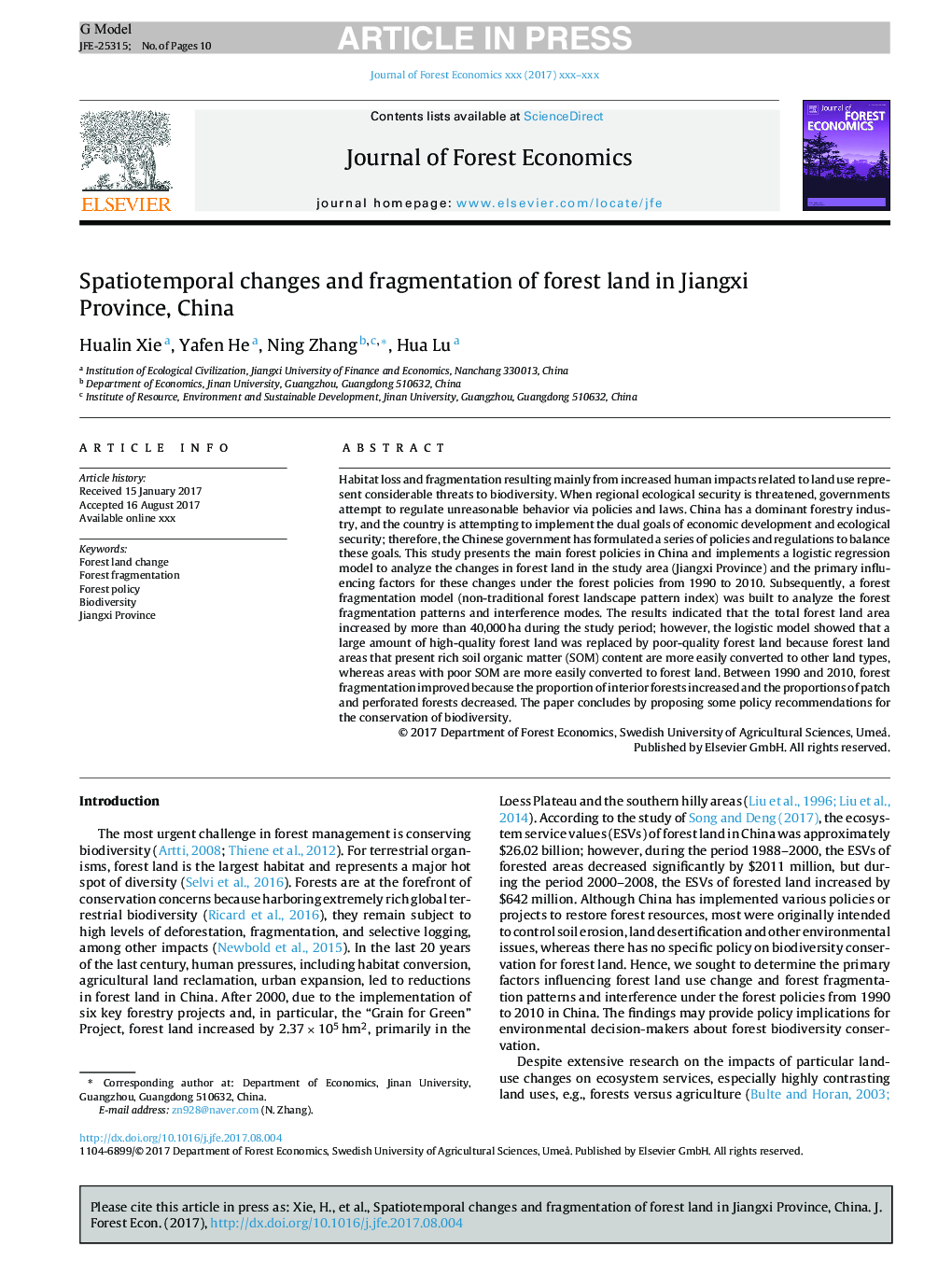| Article ID | Journal | Published Year | Pages | File Type |
|---|---|---|---|---|
| 6545148 | Journal of Forest Economics | 2017 | 10 Pages |
Abstract
Habitat loss and fragmentation resulting mainly from increased human impacts related to land use represent considerable threats to biodiversity. When regional ecological security is threatened, governments attempt to regulate unreasonable behavior via policies and laws. China has a dominant forestry industry, and the country is attempting to implement the dual goals of economic development and ecological security; therefore, the Chinese government has formulated a series of policies and regulations to balance these goals. This study presents the main forest policies in China and implements a logistic regression model to analyze the changes in forest land in the study area (Jiangxi Province) and the primary influencing factors for these changes under the forest policies from 1990 to 2010. Subsequently, a forest fragmentation model (non-traditional forest landscape pattern index) was built to analyze the forest fragmentation patterns and interference modes. The results indicated that the total forest land area increased by more than 40,000Â ha during the study period; however, the logistic model showed that a large amount of high-quality forest land was replaced by poor-quality forest land because forest land areas that present rich soil organic matter (SOM) content are more easily converted to other land types, whereas areas with poor SOM are more easily converted to forest land. Between 1990 and 2010, forest fragmentation improved because the proportion of interior forests increased and the proportions of patch and perforated forests decreased. The paper concludes by proposing some policy recommendations for the conservation of biodiversity.
Related Topics
Life Sciences
Agricultural and Biological Sciences
Agronomy and Crop Science
Authors
Hualin Xie, Yafen He, Ning Zhang, Hua Lu,
